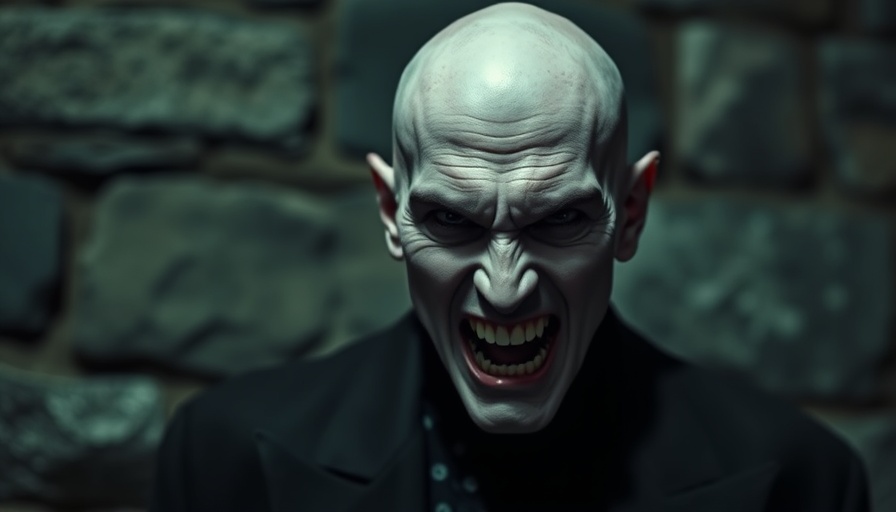
Rediscovering the Charm of Shadow of the Vampire
As film enthusiasts dive into various cinematic experiences, it’s clear that some gems languish in obscurity. One such overlooked masterpiece is Shadow of the Vampire, a film that delves into the artistry behind one of horror’s pioneering classics, Nosferatu. As the horror landscape sees a renaissance with modern adaptations, it’s time for this 2000 film to bask in a much-deserved rediscovery.
The Allure of the Film’s Premise
Shadow of the Vampire holds a unique charm, imagining that Max Schreck, the actor behind the menacing Count Orlok in the original Nosferatu, might actually be a real vampire. The film’s blend of humor and horror crafts a rich narrative that highlights the absurdities of the filmmaking process, all while capturing the palpable dread reminiscent of its silent era predecessor. Imagine the creative struggles encountered by director Friedrich Wilhelm Murnau, played brilliantly by John Malkovich, as he navigates the eccentricities of his cast, particularly from Willem Dafoe’s chilling—and humorously grotesque—portrayal of Schreck.
Why Does It Matter Now?
In a time when genre films often dwell in remakes and reboots, Shadow of the Vampire stands out as a tribute to the art of filmmaking itself. As new adaptations like Robert Eggers’ Nosferatu surface, they prompt a reexamination of the roots they draw from.
Why should audiences return to this film? Because it taps into an essential aspect of film culture: the notion that true horror doesn’t just stem from monsters on screen but also from the intense creative processes that bring stories to life. Given the growing interest in the behind-the-scenes dynamics of filmmaking, Shadow of the Vampire could spark a renewed discussion about the nature of artistry in cinema.
Understanding the Artistic Appeal
While not every movie resonates universally, Shadow of the Vampire is a piece crafted with a specific audience in mind— filmmakers, artists, and film enthusiasts who appreciate the intricate dance of creativity that goes on behind the curtain. For those who feel the exhilarating yet obsessive pull of artistic truth, this film becomes an unparalleled narrative echoing their own struggles.
The film humorously showcases Murnau’s frenetic energy and his relentless pursuit of artistic authenticity, which leads him to compromise with a literal vampire. This quirky premise emphasizes the struggle between artistic integrity and the supernatural inspirations that drive creativity. Much like real-world artists who often wrestle with their muses—whether metaphorical or literal—the film mirrors these frantic pursuits to connect with creative truth.
Will We See a Reappraisal?
One of the joys of cinema lies in its ability to invite rebirth and reinterpretation. As Shadow of the Vampire celebrates its 25th anniversary, it holds potential for renewed interest, especially given the current wave of nostalgia for horror cinema. However, this rediscovery calls for more awareness from distribution companies and cinephiles alike. With a coalition of devoted fans and potential new viewers, might we soon see a 4K restoration that pays homage to both the film and the classic it celebrates?
What Can We Learn from This?
From a filmmaker's perspective, Shadow of the Vampire unearths a central truth: that the paths of creation may reveal unfathomable depths while simultaneously providing a rich source of humor and poignancy. For local business owners involved in creative fields—be it art, film, or marketing—the film reinforces the idea that embracing quirks and eccentricities can lead to innovative outcomes.
As audiences begin to revisit what makes >em>{Shadow of the Vampire closer to their own journeys, it can inspire them to pursue their artistic endeavors with renewed vigor, perhaps even prompting collaborations that blend horror’s delicious absurdities with everyday creativity.
Taking Action in the Marketing World
The plight of rediscovering Shadow of the Vampire is a microcosm of a larger reality in creative industries. For those small business owners working tirelessly to manage their own marketing efforts, it may feel like a Sisyphean task. Engaging a part-time or contract-based marketing professional can ease the pressure of pushing your 'car' uphill. By considering outsourced marketing strategies—like hiring a fractional CMO who understands the nuances of film marketing—you can save valuable time and resources. This shift allows you to focus on your craft while someone adept at navigating the complexities of the marketing world takes the helm.
If you’re feeling overwhelmed and need a partner who can strategically elevate your marketing efforts without additional overhead, consider visiting Ezekiel Guichard's website. Here, you can discover how engaging the right marketing expertise can provide you the relief and creative space necessary to delve deeper into what you do best: creating captivating content that speaks to your audience.
In a world filled with fleeting trends, let’s not overlook the hidden treasures that exist—both in film and in our marketing practices. Rediscover and revitalize your approach to both!
 Add Row
Add Row  Add
Add 




 Add Row
Add Row  Add
Add 

Write A Comment